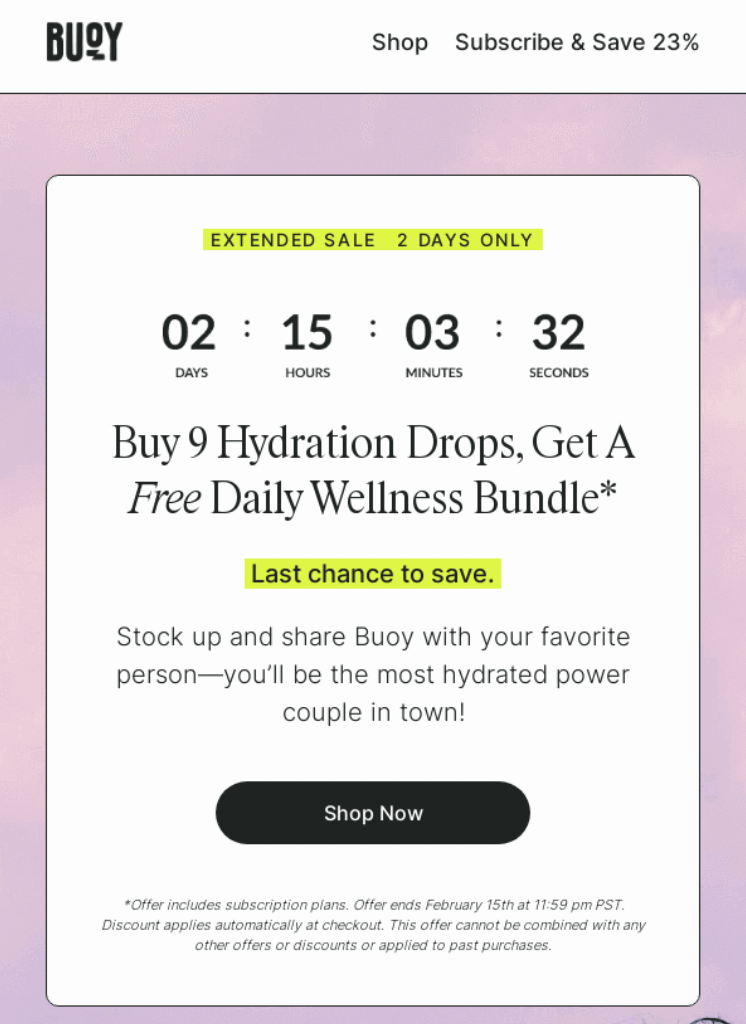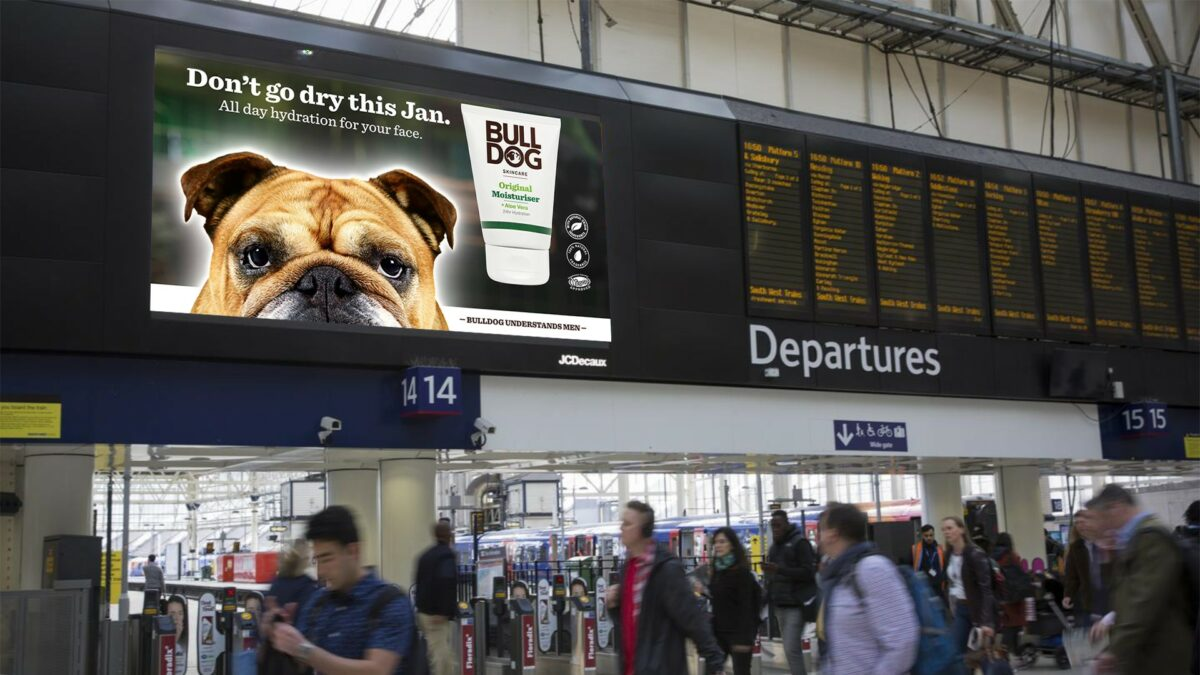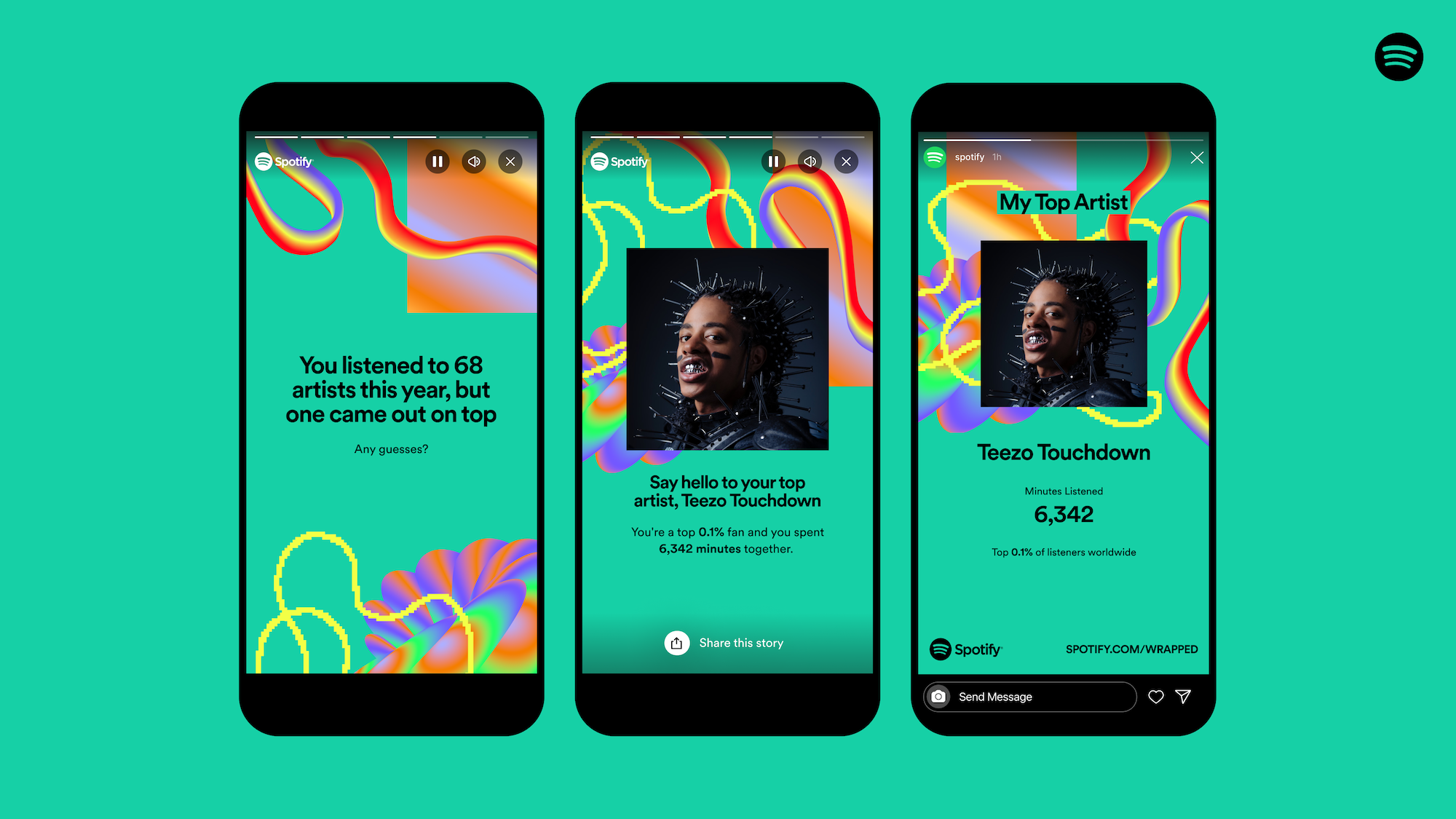There’s a lot of power in a great marketing campaign. Who can forget Apple’s rebellious “Think Different” campaign, which featured icons like Albert Einstein and Muhammad Ali and helped drive Apple back to the forefront of personal computing? Or Dollar Shave Club’s introduction to the world, cleverly pointing to the benefits of a direct-to-consumer model?
These memorable ads are more than just great creative. They’re more like the tip of an iceberg—the small, visible pinnacle of a marketing campaign planned and executed by many marketers, from product specialists to media buyers.
Ahead, learn what a marketing campaign is, the most common types of campaign, and how you can create your own campaign with some helpful inspiration from successful past campaigns.
What is a marketing campaign?
A marketing campaign combines one or more marketing activities to move a brand closer to its marketing goals. These goals might include promoting a new product, increasing brand awareness, or collecting user-generated content for social proof. Campaigns usually span several channels and formats, including video, email, social media, print, and search engine marketing.
What are the benefits of a marketing campaign?
Marketing campaigns come in all shapes and sizes, from small digital campaigns to huge multichannel endeavors. Here are some of the benefits of running marketing campaigns:
- Realize specific goals. Carefully planned marketing campaigns help brands move closer to one or more of their goals.
- Reach more customers. Marketing campaigns aim to promote a brand and its products. The increased exposure helps companies reach a wider pool of potential customers.
- Drive sales. More eyeballs on your brand and product means the potential for more sales. Marketing campaigns often are used to promote new products or generate an influx of sales on an existing product range.
- Improve brand sentiment. Some marketing campaigns don’t promote anything except the brand’s values and interests, which can help you connect with like-minded shoppers and change the way people see your company.
- Increase market share. Brands in busy verticals often run marketing campaigns to highlight what makes them different and to gain a competitive edge over similar companies.
- Boost engagement. Many marketing campaigns aim to get people talking—think Dove’s Real Beauty campaign—which generates a buzz around the brand and its products.
Types of marketing campaigns
- Email marketing campaign
- Content marketing campaign
- Social media campaign
- User-generated content (UGC) campaign
- Affiliate marketing campaign
- Brand campaign
- Advertising campaign
- Public relations (PR) campaign
Email marketing campaign
Email marketing is typically a marketing program (evergreen), as opposed to a campaign. However, an email campaign can be a fantastic way to increase sales, especially for new offerings. This can take the form of drip emails sent over time surrounding an event, for example, leading up to and during the drop of a new collection. Often these are sent to a smaller segment of a large email list, such as a VIP list.

Follow these email marketing best practices to make sure your email campaigns deliver.
Content marketing campaign
Content marketing campaigns use optimized content to share a message. Typically, a brand will develop a content calendar with its end goal in mind—for example, if the goal is to promote the launch of a new product, it might create content around how to use that product and what makes the product different from others in the market. This content will then be posted on the brand blog or turned into downloadable assets to generate leads.
Content marketing is often combined with social media marketing or paid marketing efforts, where brands will drive traffic to the content from different channels.
Social media campaign
Social media campaigns tend to run across a few different social platforms. Brands that focus on social media as their main marketing channel are usually looking to increase awareness and drive traffic to their website, but it can also be a good place to boost brand sentiment and collect customer feedback.
For example, a retail campaign might include a series of videos on TikTok, paid ads on Instagram, or a push for fresh content using a customized hashtag.
Sock brand Bombas shared a social media campaign around Valentine’s Day that paired socks with the common love languages.
User-generated content (UGC) campaign
Similar to social media, the goal of UGC campaigns is to build brand awareness by having others share your messages. The difference is that in social media campaigns, you are looking for them to re-share your message or content. With UGC, the goal is to have your customers create their own content that lines up with your message. Although this is a bigger ask for the consumer, it can be incredibly powerful when done well.
Skin care brand Drunk Elephant encourages customers to share UGC using the hashtag #drunkelephant.
Affiliate marketing campaign
Affiliate marketing is where brands provide influencers, ambassadors, and customers with a unique code to share with their audiences. The influencer or ambassador gets a cut of the commission when some buys through that code.
Brands tend to use affiliate campaigns to raise awareness of a new product or to increase their market share by having multiple influential people talking about their brand at once.
Brand campaign
Brand campaigns are targeted communications aimed at generating awareness around a brand. They usually involve a handful of media channels, such as press releases, social media, and video to tell the brand story and share the company’s unique values. Patagonia’s Worn Wear initiative is a good example of a successful brand campaign.
Advertising campaign
Advertising campaigns lean on traditional forms of marketing to promote a brand and its products—think print advertising or pay-to-play tactics like social media ads and pay-per-click marketing. The aim is often to raise awareness and drive traffic to a website.
Public relations (PR) campaign
The goal of PR is to build brand awareness by having other people talk about you and your business. This can mean offering quotes or interviews for writers or publishing a press release with an announcement.
How to create a successful marketing campaign in six steps
- Set clear, measurable KPIs
- Choose your budget and timeline
- Identify your target audience
- Choose your channels
- Plan your messaging and creatives
- Measure your campaign
1. Set clear, measurable KPIs
Great marketing campaigns have goals, and those goals are measured using key performance indicators (KPIs). These are important not only to understand what worked and what didn’t, but also to align your team. Defining KPIs ahead of time ensures everyone is on the same page.
Tools like Google Analytics have made measurement easier than ever. But most new marketers still assume that if a campaign’s goal isn’t sales, it can’t be measured. All goals can be measured. For example, awareness campaigns can be measured with reach, website traffic, or brand lift studies from groups like Meta or Nielson.
Here are some KPIs you can track depending on your campaign goals:
- Promote a new product: track the number of sales.
- Increase brand awareness: track impressions and reach.
- Drive leads: track conversions.
- Boost engagement: track comments, likes, shares, and saves.
For best results, make sure your goals are SMART (specific, measurable, achievable, relevant, and time-bound).
Instead of saying you “want to increase awareness,” say you “want to increase impressions by 40% in the next three months.” The first goal is very vague and difficult to track—what would a “good” amount of awareness be? How will you know if you’ve reached that goal? The second, more specific goal has a number attached to it so you can easily track whether you’ve hit it or not.
2. Choose your budget and timeline
Successful marketing campaigns have timelines with milestones for execution (for example, videography should be ready two weeks ahead of launch) and clear budgets, including internal resources, external resources, and hard costs. After launch, track progress against those marketing campaign timelines and ensure that spending isn’t creeping over budget.
3. Identify your target audience
The best marketing campaigns target one particular audience segment. The more specific you can be, the better, as you’ll be able to create messaging and assets that speak to that particular audience.
Start by creating a persona for your campaign—and don’t be afraid to get specific. Identify common locations, ages, and lifestyles, and dig deeper into psychographic tendencies like:
- What makes them tick?
- Why do they care about what you’re sharing?
- What are their biggest challenges and frustrations?
- What makes them happy?
- What are their goals and dreams?
For example, if you sell protein powder, you might decide to target busy people in their mid-20s who struggle to find the time to work out with a series of videos and blog posts featuring quick 10-minute workouts they can do from home or at their desks.
4. Choose your channels
Once you have an audience and a goal in mind, you can decide which channels and types of campaigns will work best for your campaign. Consider where your target audience spends their time online, but also think about what message you want to send and where that will best be received. You can also take inspiration from your past campaigns:
- Which channels do you get the most engagement on?
- Where do you have the biggest reach?
- Which channels have performed best in the past?
For example, those busy 20-somethings interested in fitness but who don’t have the time are likely using social media, so a campaign that meets them there will work well. Remember, you can use more than one channel or type of campaign. You might combine email with a social media marketing campaign that offers a discount to people who sign up via your social content.
Take this opportunity to choose the appropriate tools for tracking, measuring, distributing, and managing your campaigns.
5. Plan your messaging and creatives
Your messaging and assets will form the core of your campaign, regardless of the channel. At this point, you should have a good idea about what you want to achieve with your campaign and how you’re going to get there. Now, it’s time to create the visuals, write the content, hire any external resources, and put together a schedule.
For example, if you plan to run a social media and email campaign, you’ll need to create social media graphics, captions, and email content, at the bare minimum. It’s a good idea to plan this, including when you need each asset, who’s going to create the assets, and what kind of approval process each piece will go through to make sure everything meets the brief.
Create a schedule too. If you’re running a campaign that relies on sharing multiple pieces of content over an extended period, plan when each piece is due to go live.
6. Measure your campaign
Once your campaign is running, make sure you track its performance. Refer back to your initial goals and regularly check in to see whether you’re on the right path. Don’t feel like you’re tied to your initial concept if the campaign doesn’t generate the results you want right away—you can always tweak small parts of it to see how that impacts its performance. Think about it as a work in progress.
Once the campaign is over (if it’s a time-sensitive campaign), use marketing reporting insights to see whether you reached your goal. This is a good time to uncover any pleasant surprises or learning curves along the way. Maybe you found your target audience responded particularly well on one channel but not another, or maybe there was a specific piece of content that performed particularly well.
Take all this information and make a note of it, because it’ll be useful inspiration for your future campaigns.
Impactful marketing campaign examples
1. The Barbie movie campaign
There’s no doubt the marketing in the lead up to the 2023 release of the Barbie movie had a part to play in its huge success. The campaign cost $150 million and used a “breadcrumb strategy,” which saw the marketing team launch teasers in the year leading up to the movie’s debut. As well as paying for a trailer spot, the Barbie marketing team also collaborated with brands like Crocs to launch Barbie-inspired products and created a social media campaign that generated lots of UGC.
Why was it so successful?
The campaign created a content snowball effect. Brands wanted to jump on the Barbie bandwagon which gave the film extra exposure and consumers got involved by creating their own social media content.
2. Apple’s Shot on iPhone campaign
Apple’s famous Shot on iPhone campaign originally started to tackle negative comments about the smartphone’s camera. The brand invited photographers and iPhone users to snap pictures with their phones and share them using the hashtag #shotoniphone. Apple then selected the top images and displayed them on billboards in 25 different countries.
Why was it so successful?
The campaign was created to solve a specific problem: to prove the quality of the iPhone’s camera. The knock-on effect meant the brand generated UGC it could sprinkle throughout other marketing materials, and adding the top shots to billboards created another layer of visibility for the brand.
3. Bulldog’s Non-Dry January campaign
Bulldog Skincare jumped on the dry January trend, but not in the traditional “no alcohol” way. The brand used a play on words to encourage people to keep their skin hydrated during January. To do this, it created eye-catching billboard ads and social media ads to share its hydration message.

Why was it so successful?
The brand hijacked what’s usually a trend about not drinking alcohol for an entire month and took a unique angle around the whole “dry” messaging.
4. Pantone’s Create Your World campaign
Color brand Pantone launched its Instagram and print ad campaign Create Your World to encourage consumers to think outside the box when it comes to color combinations. The campaign showcases surreal, otherworldly landscapes in weird and wonderful color palettes to show what’s possible.
The surreal images became a talking point and generated engagement around the brand. And, while the goal wasn’t to explicitly drive more sales, it’s likely the added exposure gave Pantone a few new customers.

Why was it so successful?
The cross-channel campaign wasn’t explicitly driving people to the brand’s website or encouraging them to buy. Instead, it increased engagement around the brand by stimulating conversations online and offline.
5. Spotify’s Wrapped campaign
Every December, you see a flurry of people posting about their most-listened songs of the year—it’s become something of an annual tradition, thanks to Spotify’s interactive Wrapped campaign.
The campaign encourages Spotify users to generate their Wrapped playlist, which tells them which songs they listened to the most, their preferred genres, and how many hours they spent listening to music over the past 12 months. Music lovers are then encouraged to share their personalized Wrapped breakdown on social media.

Why was it so successful?
The campaign is highly personalized and shows that Spotify values its existing users. At the same time, it incites curiosity, because who doesn’t want to know which band monopolized their headphones over the year? The sharing element also increases awareness for Spotify and generates a lot of engagement around the brand.
What makes a winning marketing campaign?
The beauty of marketing campaigns is they come in all shapes and sizes. Depending on your marketing strategy, business model, and audience, you can build a cross-channel experience that promotes your brand, increases awareness, and drives more sales.
Take inspiration from the examples covered here but consider your own needs too. Identify your goals and match them to complementary KPIs, dig deep into your audience, and, most importantly, plan and optimize your campaign.
A winning campaign will help you meet your goals, whether you want to promote the launch of a new product, get more eyeballs on your website, or nurture a community around your unique values.
Read more
- How to Craft an Authentic Social Media Presence That Benefits Your Brand
- 30+ Influencer Marketing Statistics to Have on Your Radar (2021)
- 5 Winning Facebook Ad Strategies to Try
- 5 Free Advertising Strategies True Rivalry Uses to Gain Exposure
- Domain SEO Explained- Choosing an SEO Friendly Domain Name
- Learn the Difference Between Sales and Marketing
- How SMS Marketing Cuts Through the Noise—Plus 4 Examples to Try
- How To Run An Instagram Giveaway- Ideas + Tips
- How to Get Your Online Store to Rank on Page One (With Checklists)
- Etsy Dropshipping: The Definitive Guide
Marketing campaigns FAQ
What are the key components of a marketing campaign?
Successful marketing campaigns are made up of several key components:
- Key performance indicators (KPIs)
- Channels
- Budget
- Content assets
- Team/external resources
- A plan or schedule
How does a marketing campaign differ from an advertising campaign?
Advertising and marketing campaigns differ in a few ways. Marketing campaigns focus primarily on the brand, whether that’s increasing brand awareness, sentiment, or market share. Advertising campaigns are more specifically focused on driving sales. They do this by sharing persuasive messages to encourage consumers to buy. While marketing campaigns can still drive sales, they often have other secondary goals.
How much should I budget for my marketing campaign?
The budget you set aside for your marketing campaign will vary depending on your goal, the potential return on investment (ROI), and the channels you’re using. For example, a campaign that promotes a product through social media ads might demand a higher budget than an organic cross-channel campaign that focuses on social media and email.
How often should I update or change my marketing campaign?
It’s a good idea to revisit your marketing campaigns regularly—at least once a quarter, if not monthly. This gives you the opportunity to assess their performance and understand what’s working. The earlier you identify potential problems, the sooner you can make the required changes for better success. Flexible, proactive campaign management is critical if you want to see success.





